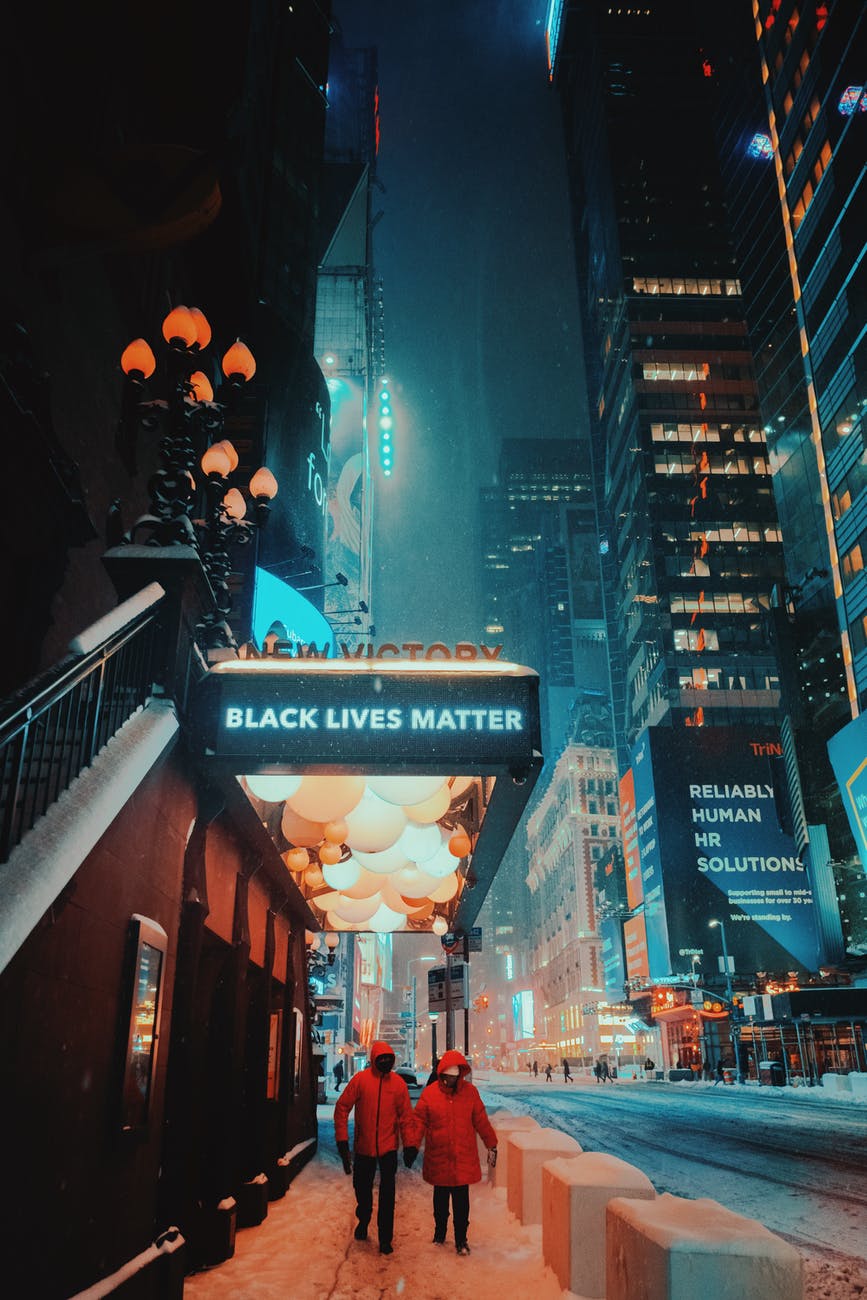by Kevin Rush
It was a muggy August, culminating in heat lighting, as my father called it. There was no thunder or rain, just electrum threaded through dark clouds and pulsing madly. My father raised an eyebrow and pursed his lips. “Hardly natural,” he said, staring out the window from under a furrowed brow. “Very odd.”
And odd is what I thought when he first showed up, not long after. Baseball was our game then, in early morning or late afternoon, working around the heat. He didn’t say anything to any of us; he just gimped along until he reached the third base bleachers and took a seat a few rows up, his stiff, dead limb extending into the aisle. Despite his frail appearance, he seemed to have a fire inside that might erupt. He didn’t call to any of us as we warmed up, and we all hoped he’d just sit a while and move on, and not be one of those old men who rail angrily at kids, because they’re the only part of the world that hasn’t stopped listening.
But before even getting to the peglegged man, since that’s what he called himself, I should mention getting down to the park, and stopping off at Tommy Weir’s house first. He had gone in, saying he just needed a minute, and that minute turned to ten, so we rang for him, and his mother let us in.
Tommy was at the dining room table, packing up the Wonder Pen woodburning kit he’d gotten for his birthday. A noisy fan sat on the table wafting smoke towards an open window. Tommy’s bat and glove sat on a nearby chair. He picked up the bat and rubbed the barrel with a cloth.
“Check this out,” he said proudly. Stenciled along the barrel of his bat was the name Lou Brock. He’d done the same thing on the back of the last finger of his fielder’s glove.
“Whoa, that’s swift,” Billy Conor said.
“What do you say, Pat?”

I didn’t want to answer. It just wasn’t what I would have done, if my parents had given me a wood burner. It looked all wrong to my eyes. A name on a bat was always in handwriting, like an autograph. Tommy had done his in thick blocks, in 3-D, like the cover of a comic book.
“Is that Lou Brock or Superman?”
“I had to cover up Roger Maris.”
“Doesn’t look official.”
“Paddy, are you passing home?” Mrs. Weir called from the kitchen. “I have something for your mom.”
So, I went to the kitchen and Mrs. Weir was packing cherry tomatoes from a basket into a brown paper bag. “I know how she loves these, and we had so many ripen this week, they’ll just spoil. Here take them to her.”
She held out the bag, holding it, then tilting her head to prod me.
“Thank you, Mrs. Weir,” I said, and she handed me the bag, but didn’t let go.
“You know, Tommy worked hard on that bat. It would have been kind to say something nice.”
Why are mothers always spying? I thought. Maybe I wouldn’t have to “be kind” if her son knew how to draw. Give me a Wonder Pen and I’ll show you how it’s done. But she was one of these mothers whose kids could never do wrong. So, I didn’t say anything, just nodded and skulked out.
We picked up the other kids from the block and I dashed up my steps to my house to drop off the tomatoes.
“From Mrs. Weir,” I told my mother.
“I hope you thanked her. Maybe if you did a little work around here, our garden could grow. But it’s always baseball. The national waste time.”
So, I was not in a good mood when we finally reached the park and started choosing sides. The peglegged man seemed to take a keen interest in the choosing, as if he knew our abilities. I thought I heard him mutter the word “slaughter” dismally. Yet, the game kept his interest for at least four innings. That was when I doubled down the line in leftfield and saw him standing when I got to second. Tommy stepped up next, bringing his bat to the plate for the second time. Earlier, he’d struck out flailing wildly at a pitch in the dirt. That had triggered a round of jeers, how he burned all the hits out of his bat. As he took his practice swings, I could see a ferocity in his eyes; his pride was on the line. So, when Terry Sullivan left a pitch over the heart of the plate, Tommy punished it. The return drive nearly parted Terry’s hair before screaming into short center field.

I knew I’d have to burn home, because the ball reached the centerfielder quickly. I tried to slide past Jim Lundy, who was in front of the plate, but the ball came in perfectly on a hop for him to sidestep and plant a foot in my path. My foot hit his shin guard and I felt my ankle roll. Pain shot all the way up my leg. I rolled over on my back and gripped my knee to my chest.
“Time! Time out!” my teammates called.
Both teams gathered in a close circle.
“You think it’s broken?” Tommy asked.
“Dunno.” I had never broken anything.
“It’s not broken,” the peglegged man said, as he clomped down from the bleachers.
“Who’s that?” boys asked me, deciding then that I was connected to him.
“He just needs to walk it off,” the old-timer assured us. “Put this on.” He handed Tommy an ace bandage.
“Me?”
“You know first aid, don’t you?”
Tommy nodded, no doubt wondering how the old man knew or if he’d just assumed.
“Wrap it tight.”
So, Tommy untied my sneaker and peeled off the shoe and sock as delicately as he could. A grapefruit was starting to grow on the outside between the ankle bone and the heel. Then Tommy noticed something I was kind of shy about.
“What’s that, a tattoo?”
“Looks like a flock of birds,” Lundy said. Which wasn’t inaccurate. Inside my shin was a cluster of freckles in the shape of an open vee, like ducks heading south.
“It’s a birthmark,” I groaned, as Tommy tightened the wrap. He worked quickly, and when the bandage was clipped in place, he pulled my sneaker back on and laced it up. Then Lundy helped haul me to my feet, and I tested if I could walk. That seemed like not a good idea. I was done, but the game went on with unbalanced sides.
Lundy, maybe feeling a little guilty, hoisted me in a fireman’s carry over to the bleachers. He plunked me down where the old man had been sitting, but he was nowhere around.
I hobbled on crutches for a couple of days, but within two weeks, my ankle was pretty normal. Our game then was football. Fall was in the air, which not only meant a slight chill and longer shadows cast by a lower sun, but fragrant smoke wafting from one direction or another. Maintenance crews raked small piles of leaves onto the paved paths and lit them on fire. I liked to watch those fires, especially when the breeze would pick up, sending sparks whirling into the air. Sometimes after our game, I’d sit with one or two friends on a bench; breathe the smoke like incense from church and talk about what we were going to do in school the next day or when we grew up.
We wouldn’t meet at the diamond now, because the outfield grass was either too clumpy or bare and the infield was all clay, so you could get scraped up. We met closer to the park’s side entrance, where there was a broad, flat lawn with thick grass that cushioned the ground. We played tackle without helmets or pads, which we eagerly accepted as a test of manhood. We were fearless in the trenches and in the open field, throwing our bodies at each other as if we were invulnerable and immortal. The only thing anyone feared was holding for the kickoff.
“I’m not gonna kick your finger, Teddy!” Lundy roared.
The rest of us had seen this coming. None of us wanted to hold, because we’d be last to get downfield and miss out on the play. Still, you can’t take the most jittery kid in school and expect him not to flinch when it looks like you’re about to kick him. But Lundy seemed to figure if he could bully the kid into holding, he could bully him into holding still. After two tries, where Teddy pulled his hand away and the ball toppled over, Lundy was red-faced and ready to punish.
“Why don’t you use a tee?” a hoarse voice called.
The peglegged man took a hand from the pocket of his peacoat and hurled a piece of white plastic high into the air. It spiraled and fluttered, bouncing a foot or two from Lundy, who snatched it up and mounted the football on top.
“Thanks, mister!” he called, and several boys echoed.
The game commenced with abandon, but was scoreless after several possessions, until Lundy hit Tommy Weir on a short crossing pattern. Tommy grabbed the ball in stride and from there no one could catch him. He showed why even the older kids were starting to call him “The Live Wire.” A bunch of our guys ran to him in the endzone and celebrated. I felt like I was watching on TV, not really a part of it, but wishing. That’s when the county cops rolled up with lights blazing.
“How many times we have to tell you kids not to play here?” an officer barked from the driver’s seat. “Get down to the diamonds where you belong!”
“This grass is better!” someone yelled.
“Only ‘cause it don’t have you little snots running all over it,” a second cop said.
“Or cop cars!” Lundy yelled and some of the boys laughed.
“Now you wanna get smart? Move it, or we’ll run you all in!”
“Why don’t you just leave these boys alone?” Red-faced with fury, the old man gimped over to the patrol cars and laid into the cops. “You should be protecting these boys, not harassing them! They’re not hurting anyone! Why don’t you run off the glue sniffers under the bridge? Or those teen gangs spraying graffiti everywhere? These boys aren’t doing anything!”
“Look, Pops, they got no right—”
“They’ve got a right to be safe,” he insisted. “And you need to protect them!”
The cops eyed one another, not sure how to handle the angry codger.
“Where were you when I lost my leg?” the old man demanded. “Exactly their age, and a pair of teenagers pushed me into a pile of burning leaves. Right over there, under that oak. They thought it was funny! My pants caught fire and they ran away, leaving me. Where were the cops then?”
“Look, mister, that’s before our time. Take it up with City Hall. You kids break it up and move along.”
“Before your time. Hell,” the old man muttered.
It was almost dinner time anyway, so we grabbed our jackets from the sidelines and started off towards home.
“Paddy,” the old man called. “Paddy Seymour!”
I stopped and waited for him to hobble over. He shooed Tommy away and leaned in to speak quietly.
“Don’t play tomorrow,” he said. “Do something else. Friday you can come right back out here. But it’s going to be bad if you play tomorrow. Will you promise me, Paddy?”
Why me, I wondered, and how does he even know me? But a lot of old people in town knew kids by their families even if they never met. Plus, I saw the pleading in the old man’s eyes. They were faded blue with age, but spiked with veins of red, and I thought he might weep if I defied him.
“Okay,” I said. He thanked me and hobbled off.
“What was that about?” Tommy asked.
“I don’t know.”

I kept the old man’s warning to myself that night and all through the morning at school. Then after lunch recess, Lundy told us the other fourth grade class had challenged us to a game at 3:30 in the park.
“We need everybody to show up!” he barked. “No excuses!”
The room exploded with grunts and cheers and fists pounding on desks, until the teacher demanded quiet. Tommy leaned toward me across the aisle.
“You’re coming, right?”
“Yeah, sure,” I said, forcing the words past a huge knot in my throat.
“Don’t be scared of the cops,” Lundy said on the walk home.
“I’m not.”
“What then? Can’t be Stranburg. I’ll handle him.”
“Why would I be scared of Stranburg?”
“Look, Seymour,” he said. “If we gotta play short, or we gotta match Teddy against anybody good, we’re done. So be there, or so help me, I’m gonna pound you the next time I see you. An’ every time after that.”
That settled my mind against going. I didn’t know what the old man meant, and I didn’t expect a run-in with the cops. But I didn’t like some bully telling me what to do, even if it cost a fat lip. Then I thought of the other boys I liked better than Lundy. They were counting on me, too. So, I changed into my play clothes and trotted down towards the park. I’d be a little late, but wouldn’t miss much.
When I spotted the stone gateway on Garrison Avenue, I kicked into a sprint and was about to break an imaginary tape when out of nowhere stepped the peglegged man. I skidded on my heels to a stop.
“I knew you wouldn’t listen, Paddy,” he said, “but I can’t let you pass.” His eyes were blue ice in a bed of hot coals. “Me being here is a gift. Don’t you see, I’m trying to save you.”

“I don’t know what you’re talking about.” I looked past him and tried to skirt around. But he cuffed me by the hood and held me there.
“I need to show you something. After, you make up your mind.”
He let me go and stepped toward the gray stone post.
“One day, I came here to play football. The cops ran us off the field, so we took our game down to the diamonds. Along the way, a friend punted the ball off the side of his foot, and it went skipping down the path away from where we were heading. I ran the ball down and grabbed it before it rolled into a leaf fire. When I turned around, three bigger boys were blocking me. They demanded the ball, and I wouldn’t give it up, so they started pushing, until one pushed me into the fire. My pants leg burst into flame. I lost my leg that day.”
He lifted his wooden leg up with two hands wrapped around the thigh, and the foot rested on a ledge in the post.
“When I got fitted for the leg, a friend came over with his woodburning kit, and he etched this mark in it.” He rolled down a worn sock revealing a dark, wavy line scrawled across the shin, like an open vee, like birds flying south. “I’ve put it on every leg I’ve owned since.”
“Who did that?”
“You know who. Tommy Weir.”
“But that’s…”
“We’ve been given a gift, don’t you see?” he cried. “I prayed like a madman for this. And I had a vision; don’t know if it was an angel of God or Satan himself, but I got a chance to come back and warn you.”
“I gotta go,” I said, though I couldn’t move.
“You gotta go home, Paddy,” he implored. “You don’t want to know what it’s like growing up half a man. The pegleg boy. Nobody cares anything else about you; you’re the kid with the stump. While Tommy Weir gets a track scholarship and runs in the Olympics. Go home, Paddy. Come back and play tomorrow. Don’t waste this gift.”
I thought maybe I could be careful and not go near the fires. But I suspected if I crossed the threshold, I’d be daring fate, and I’d surely lose. I searched his face, studying every crease, every pore, the way the thin skin hung from the bones, and wondered if that really could be me. A thousand years of wind and rain and scorching sun wouldn’t so hollow my plump cheeks or thin my hair or sag my neck in folds. I was looking at impossibility itself. But if there was any chance that fire would melt my flesh and char my bones, that I’d lose a leg up to my knee. I couldn’t take that chance for anything. I backed away, and ran as fast as I could home.
I tried to act like it was a normal afternoon. I did some weeding in my mother’s garden. “It’s about time you did some work around here,” she said, “instead of always taking, taking, taking.” And I got my homework done, so I could watch TV: Daniel Boone, then My Three Sons and Bewitched. I stayed up for them all, even though I didn’t follow any of it. My mind kept going back to the old man’s prophesy. I had nightmares where I tore at my covers, which I imagined were flames. I felt the horror of being on fire, skin turning to ash and falling silently in powder off the bone.
I woke up exhausted, wondering if I should fake being sick and stay home. When I’d dressed and straggled into the kitchen for breakfast, my mother told my sisters to take their bowls into the living room.
“Sit down, son,” my father said. My mother wiped her eyes with a tissue; she’d been crying. “We have bad news.”
I sat and they lowered themselves into the chairs on the other side of the table.
“Yesterday, there was an accident,” my mother said. “At the park.”
“We don’t know exactly what happened,” my father said. “But the football got loose, and Tommy chased it over where some leaves were burning, and somehow he got too close to the fire.”
“No, no, no,” I kept repeating.
“He got burned real bad,” my mother said.
“He, um, they had to take his leg,” my father said.
I broke from the table and ran from the house. My mother yelled at me to get back, but for once I didn’t listen. Where was I going? I didn’t know. Just away from his words, ringing in my ears. ”Don’t waste this gift…I had a vision…an angel or Satan himself, I don’t know.” What didn’t he know? Did he know about Tommy? “Tommy Weir gets a track scholarship and runs in the Olympics.” He had to know.
I busted through the Garrison gate and the park seemed to leap back, startled. I ran again, but stopped as pale lightning rippled the sky. No thunder. Just one eerie flash after another. Now I felt alone and exposed, naked in my shame. I wanted to run again, but felt guilty for being able to.
“Are you happy now?” I screamed as I pounded the turf pulling tufts of grass up in tight fists. “Did you get what you wanted? Come out and show me!”
I wandered the park, crying and trying to pray, which I knew I had no right to do. The peglegged man, who was me, had bargained with the devil. Not ‘cause of a bad break, but ‘cause of some bad seed planted in him before it even happened. The seed that was growing in me. I felt it wriggling inside now. Tommy and his bat. “Swift,” Billy said. But not me. I was choking, as I cried, like vomiting up poison.

So, I just wandered the park. I found myself down by the running track, which seemed off somehow in the morning light. Sun burned off dew so the scene rippled. Some early morning joggers were finishing their laps. I leaned on the fence and saw something odd; a silver-haired man was running on what looked like a curved ski that hooked up to his knee. He was missing the lower part of his leg. But he ran with even strides at a strong pace. He sprinted the last length of the oval, then broke stride and wound down. He trotted, then walked, then left the track for a gym bag in the center of the oval.
I hopped the fence and walked towards him, where he sat, removing the curved appendage and replacing it with a metal post, like a mechanical leg. He caught me staring and smiled.
“Freaky, huh?” he chuckled.
“I’ve never seen a leg like that.”
“It’s a new kind of prosthesis. It looks all sci-fi, but it feels natural. Gives the way a real ankle would.”
“How long…?”
“Have I used the blade, or since I lost my leg? I think I was your age.”
He strapped on the metal leg, and I noticed there were etchings on either side. Lightning bolts running up either side of the shin.
“Like that design? Friend on mine did that on the first leg I had. It was wood and he burned it right in. He was the artist of my class. I’ve had the same image printed on every leg since.”
“What happened to him? Your friend?”
The man shrugged. “We lost touch. He could be doing anything. He was smart and talented. Just needed to believe more in himself.”
The man pulled a warmup suit over both legs and rolled up to a standing position. He shouldered his bag and set his eyes toward the parking lot. “Nice meeting you,” he said, and waved casually as he walked away.
“Nice meeting you, too, Tommy,” I whispered. As he evaporated with the morning dew, I was determined not waste this gift.

If you enjoyed this story, please visit my Amazon author page and consider purchasing one of my books. You can also support this website by clicking on an affiliate link and making a purchase. For example, the Product of the Week, featured below. When you click and buy anything at all in the next 24 hours, the website receives a small commission at no extra cost to you. Thank you for your support.
Product of the Week
I got this handy little device to clear some of the jungle growth in my backyard. Lightweight, yet powerful and relatively quiet. You can rev it up without feeling like you’re at the Daytona 500. Tore through the Carolina Creepers, thorns and all. A full charge lasts about 25 minutes, which is all the time I want to spend whacking weeds anyway. Great unit. Great price. Kevy says, check it out.



















































Recent Comments